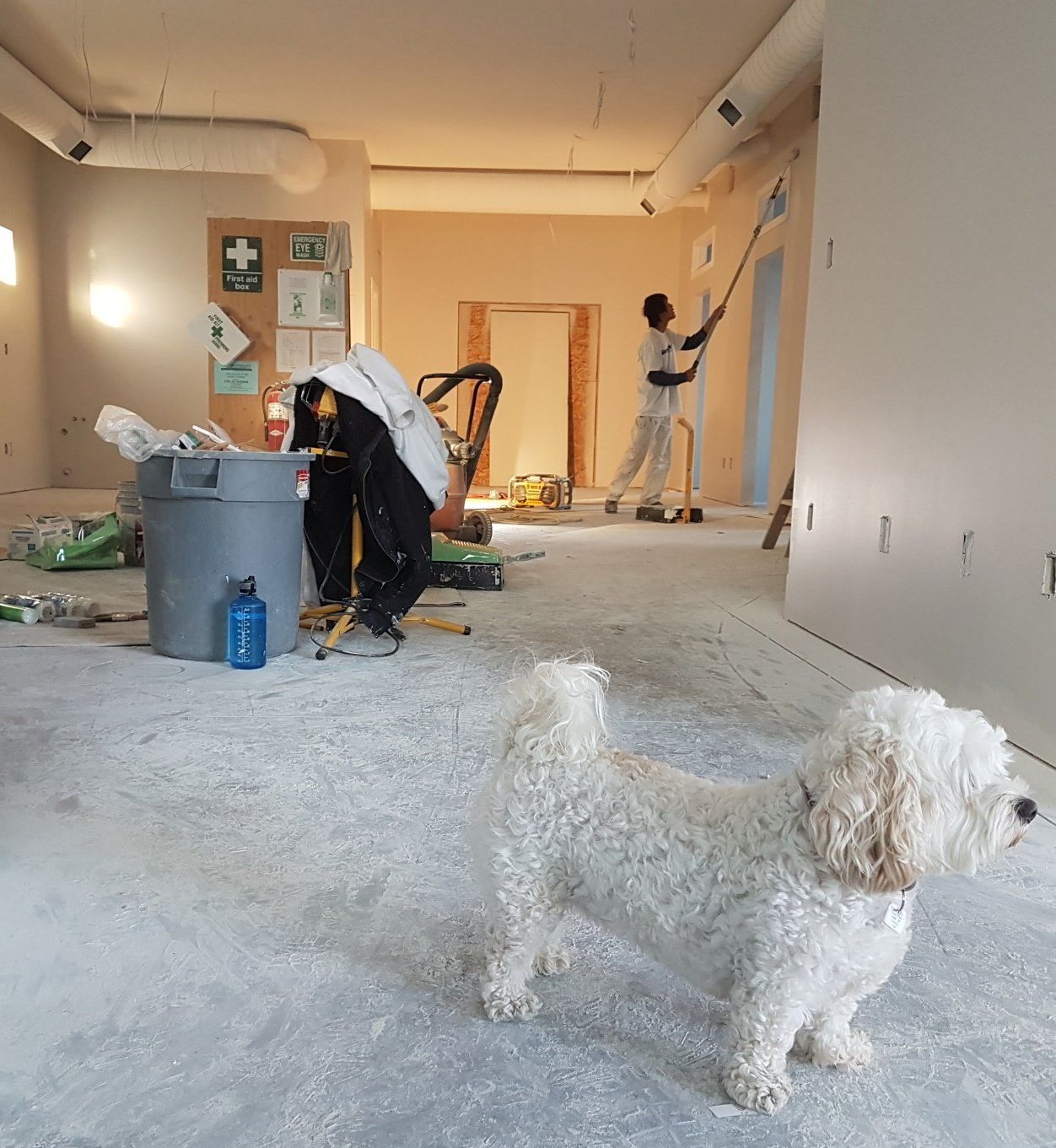Home Slab Foundation Construction in Austin, TX
Build Your Austin Home on OnPoint’s Rock-Solid Foundation Magic
At OnPoint Construction, we’re famous for delivering top-quality home slab foundation construction in Austin, TX that sets the stage for your dream home. With over a decade of expertise, our skilled artisans pour passion into every concrete slab, crafting foundations that make jaws drop.
Design a Foundation That Stands Strong
Your home deserves a foundation as solid as your vision. Our slab foundation installation in Austin, TX starts with a deep dive into your site’s needs, from soil type to home design. We craft custom plans that tackle Austin’s challenging clay soils, using vivid blueprints to map out a rock-solid base. Whether you’re building a sleek condo or a classic Texas home, our team ensures your foundation meets strict Austin codes with high-quality precision. We use premium concrete and steel rebar, delivering a slab that shines in Austin’s sun-soaked climate and supports your home for decades.
Custom Designs
Shape your Austin, TX dream home with OnPoint’s custom-designed slab foundations—tailored to your vision with epic flair!
Premium Materials
Anchor your Austin, TX home with OnPoint’s premium materials for slab foundations—tough concrete built to shine forever!
Flawless Construction from the Ground Up
Building a slab foundation is no small feat, but we make it look easy. Our residential slab foundation in Austin, TX covers every step, from expert excavation to perfect concrete pouring. We dig deep with grading and soil stabilization, ensuring your slab stands firm against heat, humidity, and soil shifts. Whether it’s a new build in Round Rock or an addition in Cedar Park, our artisans pour slabs with ninja-like precision, using top-notch materials for a flawless finish. Our high-quality craftsmanship creates a foundation that’s as tough as Texas.
Expert Repairs for Lasting Stability
Even the best foundations can face cracks or settling over time. Our concrete foundation repair in Austin, TX swoops in to save the day, fixing issues fast to keep your home steady. From sealing hairline cracks with epoxy to leveling slabs with steel or helical piers, we restore stability with high-quality techniques. Our team assesses your foundation’s condition, targeting the root cause to prevent future problems. Whether it’s a home in Lakeway or East Austin, our repairs ensure your Austin property stays safe and solid.
Why OnPoint’s Foundation Craftsmanship Rocks
We’re not just builders, we’re creators of homes that stand the test of time. Our home slab foundation construction in Austin, TX shines because we obsess over quality. Every project gets our full attention, using premium, eco-friendly materials to battle Austin’s wild weather. Here’s why we’re top-notch:
- Unmatched Craftsmanship: Every slab and pour is crafted with care.
- Custom Designs: Your home’s needs drive every detail, from cozy to grand.
- Premium Materials: Durable concrete and rebar for lasting strength.
- Full-Service Expertise: From foundations to new home builds, we do it all.
- Client Happiness: Our fans love our work, and we’re here to wow you too.
Pair Your Foundation with Our Expertise
Your solid foundation gets even better with our full range of services. Add custom cabinetry for stunning interiors, plumbing for seamless systems, or doors and windows for a polished look. Our deck and pergola services create epic outdoor spaces, while electrical work powers your home perfectly. From kitchen remodeling to auxiliary dwelling units, we craft Austin homes that spark joy.
Build Your Austin Foundation Today
Ready to build a rock-solid home with home slab foundation construction in Austin, TX? OnPoint Construction delivers high-quality slab foundation in Austin, TX that makes your vision soar. Contact us for a free consultation and custom quote. Let’s build something extraordinary, your dream home’s waiting, and we’ll make it epic!
The OnPoint Process
Crafting Your Custom Home from the Ground Up in Austin
Planning & Design
Work with our team to create detailed plans and specifications for your project.
Permits & Approvals
We handle all necessary permits and ensure compliance with local building codes.
Construction
Expert construction with regular updates and quality control throughout the process.
Final Inspection
Thorough final inspection and walkthrough to ensure everything meets our high standards.
Contact Us
What makes our remodeling process different from other contractors in Austin?
We don’t just show up with tools and a quote, we take the time to understand your lifestyle, your vision, and your budget before we lift a hammer. We believe in transparent pricing, using premium materials, and keeping you in the loop at every stage. No hidden fees, no surprise delays, and no cutting corners.
How do you know if your kitchen needs a full remodel or just an update?
If your layout feels cramped, your appliances are outdated, or your cabinets are worn, a remodel might be the best investment. But sometimes, a smart refresh, like new countertops, backsplash, or fixtures — ,can give your space new life without a major overhaul. We’re happy to walk you through both options so you can make the right choice.
How long does a kitchen or bathroom remodel take in Austin?
Most kitchen remodels we complete run 4–8 weeks, and bathrooms take 3–6 weeks depending on size, materials, and custom features. We’ll give you a realistic timeline during the consultation so you know exactly what to expect.,
Do we help with design, or do you need to hire a separate designer?
We can handle the entire process, from layout ideas and material selection to the final build. If you already have a designer, we’ll coordinate closely with them.
But many of our clients save time and money by letting us guide both design and construction.
What’s the first step?
It starts with a free, no-obligation consultation. We’ll talk about your goals, your style, and your budget, and then prepare a detailed estimate with no hidden surprises. You can call us at (512) 969-8828 or request a quote through our website.
Transform Your Austin Backyard Today
Ready to craft a stunning backyard in Austin, TX? OnPoint Construction delivers high-quality outdoor decks in Austin, TX and custom backyard landscaping that make your vision soar. Contact us for a free consultation and custom quote. Let’s build something extraordinary, your dream backyard’s waiting, and we’ll make it epic!
Build Your Austin Home on a Solid Foundation
A slab foundation is the backbone of your home, designed to support its weight and resist Austin’s challenging clay soils and seasonal weather shifts. We understand the unique demands of Austin’s climate, crafting foundations that stand firm against soil expansion and contraction. Picture a seamless, level base for your dream home, poured with care and built to last. With premium materials and advanced techniques, we ensure every project is a masterpiece. Let’s explore how our slab foundation services can set your Austin home up for success.
Expert Slab Foundation Construction for New Homes
A strong foundation starts with expert planning and execution. Our residential slab foundation services in Austin, TX create solid, level bases for new homes and additions. We begin with thorough site preparation, including excavation, grading, and soil stabilization, to ensure a stable surface. Using high-quality concrete and reinforcing materials like steel rebar, we pour slabs that withstand Austin’s heat, humidity, and soil movement. Our team designs each foundation to meet your home’s specific needs, ensuring a durable base that supports your vision for years to come.
Reliable Concrete Foundation Repair
Over time, even the best foundations can face challenges like cracks or settling due to Austin’s clay soils. Our concrete foundation repair in Austin, TX restores your home’s stability with precision. Whether it’s sealing hairline cracks with epoxy, leveling uneven slabs with piers, or addressing moisture issues, we use advanced techniques to fix problems fast. Our team assesses your foundation’s condition, recommending solutions like steel or helical piers to transfer weight to deeper, stable soil. With our repairs, your Austin home stays safe and secure.
Why Choose OnPoint for Slab Foundation Construction?
We’re more than contractors—we’re builders of homes that last. Our slab foundation construction in Austin, TX stands out thanks to our master craftsmanship, personalized approach, and high-quality materials. Every slab is poured with care, using durable concrete mixes designed for Austin’s unique soil and climate. We prioritize proper ground preparation and reinforcement to prevent cracking or settling, ensuring low-maintenance foundations that last for decades. Our transparent process keeps you informed, delivering projects on time and within budget. With a focus on quality and happy customers, we’re proud to be a leading name in Austin’s construction scene.
Pair Foundation Work with Our Other Services
Your slab foundation pairs beautifully with our other offerings for a complete home transformation. Add custom millwork for elegant trim, plumbing services for seamless systems, or doors and windows for a polished exterior. Explore our drywall services for flawless interiors or our deck and pergola services for a cohesive outdoor space. Whatever your vision, we make it happen with precision and care.
Start Your Foundation Project Today
Ready to build or repair a slab foundation for your Austin home? OnPoint Construction delivers strong, reliable results that elevate your space. Contact us for a free consultation and custom quote. Let’s create a solid foundation together—put your imagination on point, and we’ll bring it to life!
OnPoint Blog:


Our team is here to help.

If you wish to modernize your traditional slab and foundation area, a transitional style could be your perfect choice. Select from a wide array of colors, shades, and textures that will effortlessly sync with your new stainless steel rebar, heating systems, and sleek concrete molds. Our design team will guide you in selecting high-quality materials that match your budget and style. As we articulate our design concepts, you will find that every detail is centered on our customer's requirements and goals.



